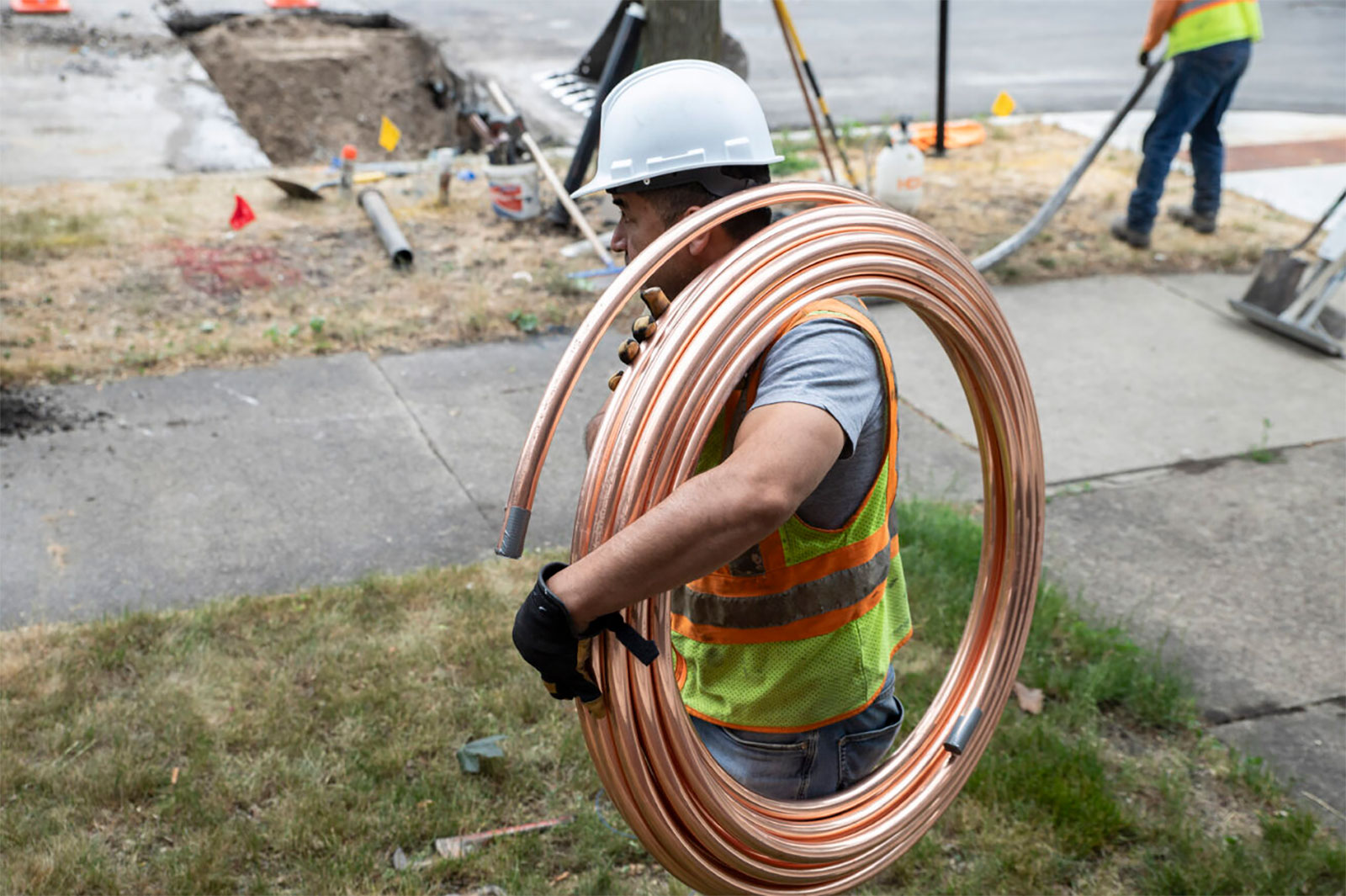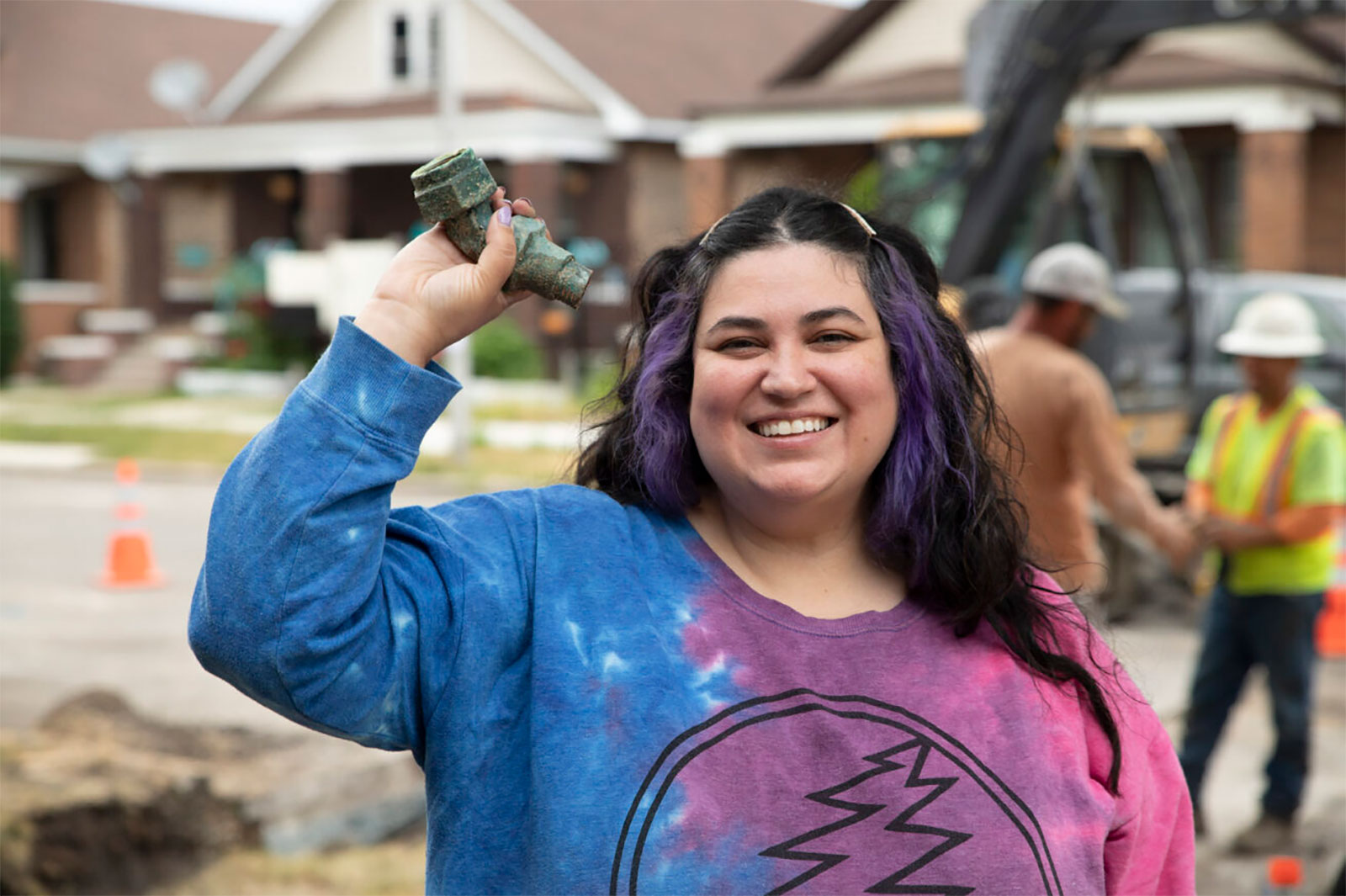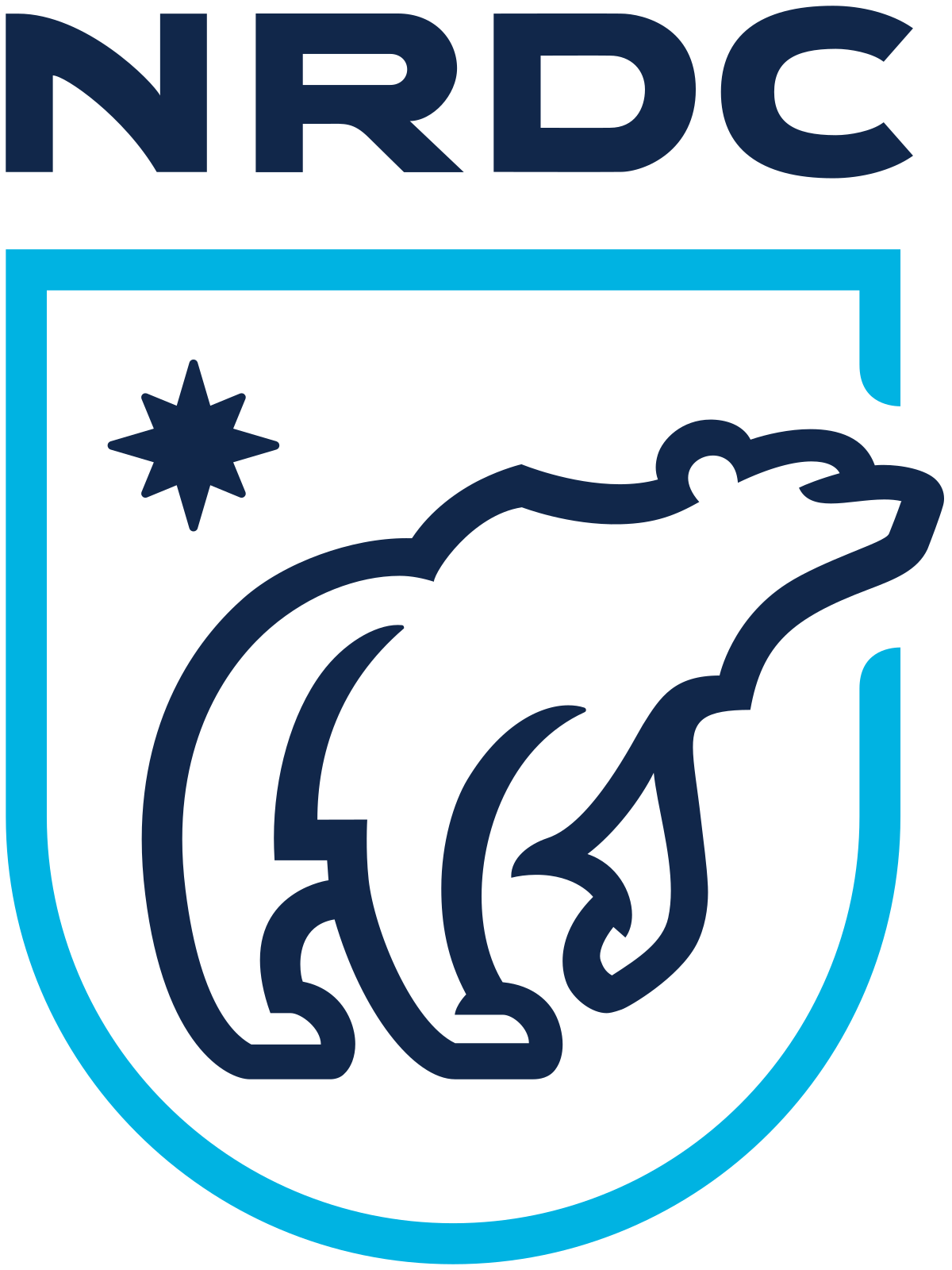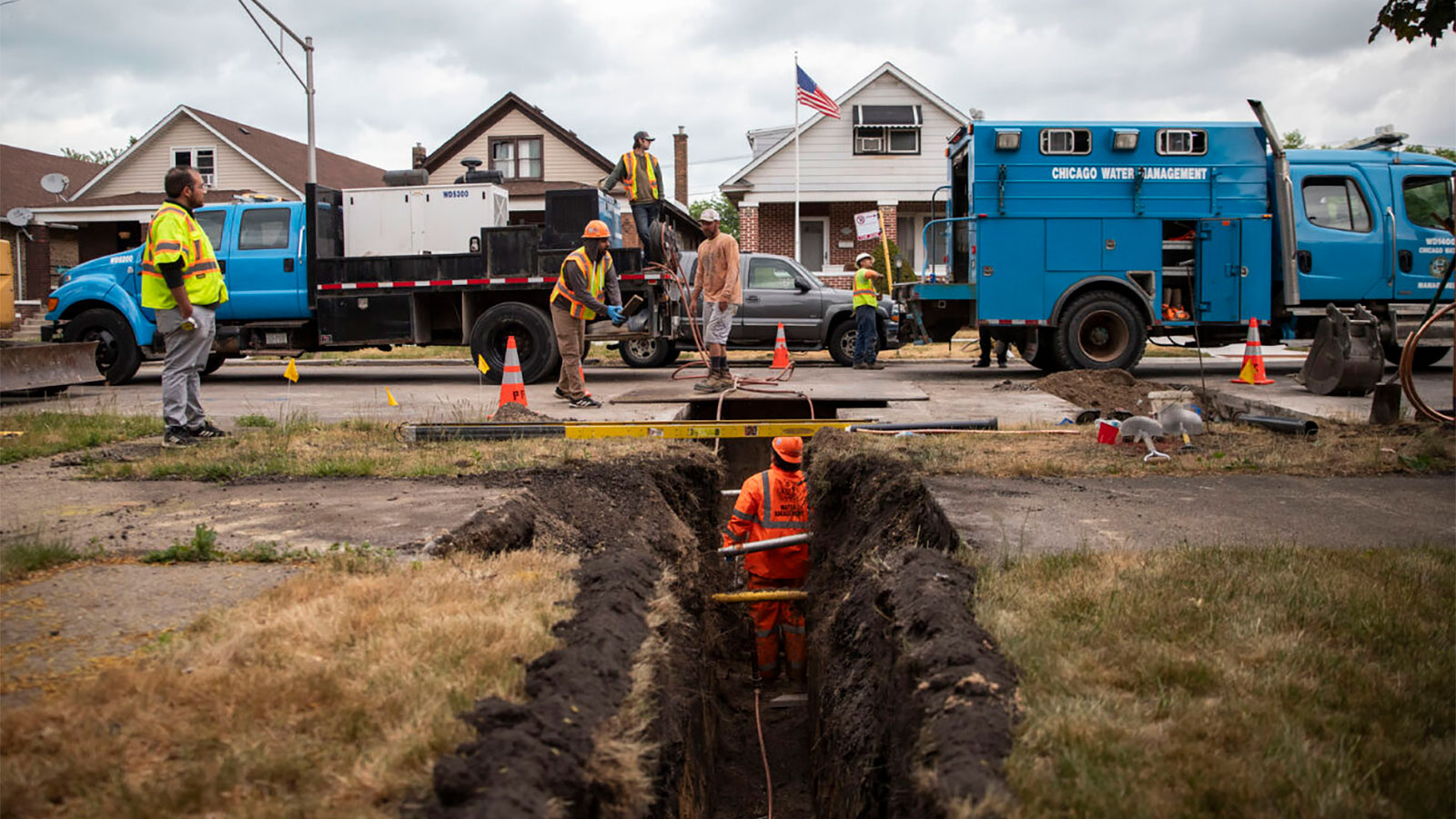Gina Ramirez grew up hauling cases of bottled water from the store to her home on Chicago’s South East side. It was exhausting and expensive, but her family had no choice. The water from the tap in her home, like many others in her neighborhood, was contaminated with lead.
Lead is a powerful neurotoxin with irreversible impacts, which is why the Centers for Disease Control and Prevention, or CDC, has designated this week as National Lead Prevention Week. Exposure can cause brain damage in early childhood, harm the fetuses of pregnant women, and trigger miscarriages. Even low levels of lead exposure can cause kidney problems and heart disease in adults. Like many other heavy metals, it accumulates in the body over time. There is no known safe level of lead exposure.
Families around the country — most infamously, in Flint, Michigan — are dealing with lead in their water infrastructure. But Chicago is a hotbed of contamination, with the highest number of lead service lines in the nation. Experts believe that over 400,000 lead pipes supply water to homes throughout the city. A recent independent analysis by the Guardian found that one in 20 Chicago homes had tap water exceeding federal lead contamination standards. A third of the 24,000 tests showed lead levels above those permitted in bottled water, and 71 percent of homes exceeded the level the American Academy of Pediatrics recommends as a maximum lead level for kids in schools.
Chicago was one of the last cities in the nation to stop installing lead service lines. The city mandated them in new construction until Congress outlawed the practice in 1986. The result is a vast network of lead pipes that still feed contaminated water to homes and families throughout the city. The fallout from this toxic legacy is everywhere. Thousands of families live with lead-contaminated tap water, and testing found that drinking fountains in schools and parks throughout the city also had high lead levels.
This poisoning of Chicago’s tap water has had multi-generational impacts. Like Ramirez, Crystal Guerra, a parent, artist, and activist, grew up in Chicago’s South Side. Her father worked in the city’s steel mills, and her mother was a teacher at a local elementary school. In 2019, she got a letter from the local hospital. Her 1-year-old son, who was still breastfeeding, had high blood levels of lead.
Guerra was shocked. “I had a healthy baby, and the next thing I knew, he had a high level of lead,” she says. “He was only a year old, and I couldn’t protect him from this. I was angry.” Doctors tracked her son’s lead levels and developmental milestones for the next several years. Thankfully, after the family began drinking filtered and bottled water, his most recent tests showed that the amount of lead in his blood had significantly dropped, and he has shown no developmental delays.
Driven by her personal experience, Guerra helped found Bridges Puentes, a collective that responds to community needs through art and activism. Vanessa Bly is another Chicago artist who helped found and run the organization. “We’re a low-income neighborhood with old houses,” she says. “We need the city to assist with fixing this issue.”
Ramirez, who now works as the Midwest outreach manager for the Natural Resources Defense Council, or NRDC, agrees. Ramirez’s parents are retired on a fixed income, and her mother has limited mobility. After decades of buying bottled water — which cost the family up to $600 per year — they decided to apply for a city program that replaces lead service lines for households below a certain income threshold. The complex and intimidating application process took over two years, but in June 2023, Ramirez finally saw the lead pipes that fed water to her childhood home replaced by the city. The process took six hours, and Ramirez estimates that it involved 20 different people. “I was impressed with how fast they replaced it, but I was also a bit overwhelmed at how many people and trucks showed up,” she says. “It was all for just one house.”

Other cities have found more efficient or effective approaches to the issue. In Newark, New Jersey, the city replaced almost 24,000 lead service lines in just three years at no cost to residents. The city and surrounding county raised bonds to pay for the replacements that are mostly covered by fees paid by the local port authority. Oscar Sanchez, a community planning manager with the Southeast Environmental Task Force, a Chicago-based environmental nonprofit, believes Newark’s strategic approach created the positive outcome. “One important tactic was that they worked on clusters, instead of just one house at a time,” he says. “If they found one house with a lead pipe, they just changed out the whole block.”
Another approach could be to put lead filters at locations using lead pipes for drinking water. This “filter first” approach is poised to be adopted in the state of Michigan, which will mandate filtered water in all schools and childcare centers. “They’ve pushed the filter first approach, and they’re being very strategic about prioritizing spaces where children spend many hours each day,” such as schools and daycare centers, says Sanchez. “A similar government-funded filter program in Illinois would be a really good solution to ensure people have access to clean water for the long-term.”
NRDC’s Safe Water team has worked on Chicago’s lead service line issue for many years, with campaigns ranging from grassroots community organizing and education to high-level policy and advocacy. In a recent NRDC poll, lead service lines were one of the top priorities for the Chicago community. “We need to put the approaches that have worked in other places, like Newark’s lead service line replacement program, into action here in Chicago,” Ramirez says.

The federal government is also finally taking action: The EPA is about to release an updated rule that tackles lead in tap water. Advocates are pushing for the agency to require all lead pipes to be removed within 10 years, and for water utilities to pay to replace the full pipe rather than shifting any of the costs to residents. These changes could force Chicago and other cities to accelerate their lead service line replacement.
But while the Biden administration has earmarked billions to address lead service lines, funding will be a challenge for Chicago. The city will only be able to access a small portion of the $15 billion in federal funding for lead service line replacement due to some technical red tape: The city is not designated as a disadvantaged community by the state of Illinois — a requirement to access more funding.
And due to Chicago’s specific construction requirements, permit fees, and other policies, replacing a single lead service line can cost up to $30,000 — a price tag far higher than virtually any other city — that is out of reach for many homeowners and renters. “I’m buying a house, and it has a lead service line,” says Ramirez. “I don’t qualify for the equity line replacement program and don’t have a bunch of extra money lying around, so I’m going to have to live with filtering and bottled water.”
Another hurdle for Chicago is the lack of trained technicians to replace the lead service lines—but this issue could be reframed as an opportunity. “We should use this to create employment for the disenfranchised communities that this issue has harmed,” says Brenda Santoyo, a senior policy analyst with the Little Village Environmental Justice Organization. “It’s a chance to work with local colleges to create a training program and a pipeline to get people into these trades and create good jobs. This is a large-scale problem, and we will need a workforce to solve it.” In Newark, the city worked with a local union to train local residents, many of whom were unemployed, to replace the city’s lead lines. Those trained employees now can use their new skills to help other cities replace their lead pipes.
The monumental scale and impact of Chicago’s lead service line issue means that the city, state, and federal government will need to work together to find a solution — and that support can’t come soon enough. “When I look at the shopping carts of families in my neighborhood, they’re all filled with cases of water,” says Ramirez. “We shouldn’t have to live this way, buying bottled water, not trusting our tap, and suffering from water-related health ailments. We have a right to healthy, clean water.”
Sign NRDC’s petition to the White House urging the Biden administration to remove lead service lines as quickly and as equitably as possible.
NRDC (Natural Resources Defense Council) is an international nonprofit environmental organization with more than 3 million members and online activists. Established in 1970, NRDC uses science, policy, law, and people power to confront the climate crisis, protect public health, and safeguard nature. NRDC has offices in New York City, Washington, D.C., Los Angeles, San Francisco, Chicago, Bozeman, MT, Beijing, and Delhi (an office of NRDC India Pvt. Ltd). Visit us at www.nrdc.org and follow us on Twitter @NRDC.



